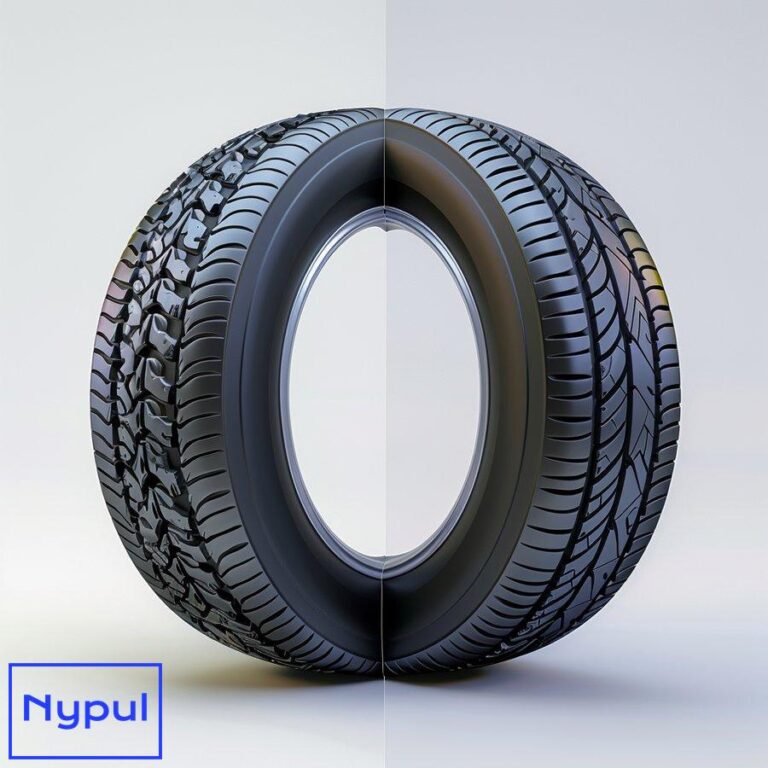What Is the 14-Hour Rule Under the Hours-of-Service
The 14-hour rule is a crucial component of the hours-of-service (HOS) regulations established by the Federal Motor Carrier Safety Administration (FMCSA) in the United States. This rule plays a vital role in ensuring the safety of commercial motor vehicle (CMV) drivers and other road users by limiting the maximum number of hours a driver can work within a single day.
What is the 14-hour rule in hours-of-service regulations?
The 14-hour rule, also known as the 14-hour driving window, is a fundamental aspect of the hours-of-service regulations that govern commercial motor vehicle operations in the United States. This rule stipulates that a CMV driver may not drive beyond the 14th consecutive hour after coming on duty, following 10 or more consecutive hours off duty.
Key aspects of the 14-hour rule:
Time limit: The rule establishes a 14-hour maximum time frame for driving activities.
Consecutive hours: The 14-hour period runs consecutively from the moment a driver comes on duty.
Off-duty requirement: To reset the 14-hour clock, a driver must take 10 or more consecutive hours off duty.
Non-extendable window: Once the 14-hour window begins, it cannot be extended by taking breaks or going off duty.
The 14-hour rule is designed to prevent driver fatigue by ensuring that commercial drivers complete their work within a reasonable timeframe. This regulation aims to enhance road safety by reducing the risk of accidents caused by drowsy or overworked drivers.
Importance of the 14-hour rule:
Safety enhancement: By limiting the duration of a driver’s workday, the rule helps prevent fatigue-related accidents.
Consistency in scheduling: The rule provides a standardized framework for carriers and drivers to plan their operations.
Compliance with federal regulations: Adherence to the 14-hour rule is mandatory for most CMV drivers operating in interstate commerce.
Driver well-being: The rule promotes better work-life balance and helps protect drivers from excessive work hours.
Understanding the 14-hour rule is essential for both drivers and motor carriers to ensure compliance with federal regulations and maintain safe operations on the road. The rule works in conjunction with other HOS regulations to create a comprehensive framework for managing driver fatigue and promoting highway safety.
How does the 14-hour driving window work?
The 14-hour driving window is a critical component of the hours-of-service regulations, designed to limit the total time a commercial motor vehicle driver can be on duty and driving within a single day. This window operates as a fixed period that begins when a driver starts any work-related activity after taking the required 10 consecutive hours off duty.

Start of the 14-hour window:
On-duty activities: The clock starts ticking as soon as a driver performs any work-related task, including:
– Pre-trip inspections
– Fueling
– Loading or unloading
– Driving
– Paperwork
– Vehicle maintenance
Consecutive nature: Once the 14-hour window begins, it runs continuously, regardless of whether the driver is actively working or taking breaks.
Operation within the 14-hour window:
Driving time limit: Within the 14-hour window, a driver is allowed to drive for a maximum of 11 hours.
Non-driving work: Any non-driving work performed during this period counts towards the 14-hour limit but not towards the 11-hour driving limit.
Breaks and off-duty time: Short breaks or off-duty periods taken during the 14-hour window do not extend the window’s duration.
End of the 14-hour window:
Driving prohibition: Once the 14-hour window closes, the driver must cease all driving activities, even if they haven’t used up their full 11 hours of driving time.
Non-driving work: After the 14-hour window ends, a driver may still perform non-driving work, but they cannot operate a CMV until they have taken the required 10 consecutive hours off duty.
Resetting the clock: To start a new 14-hour window, a driver must take at least 10 consecutive hours off duty.
The 14-hour driving window works in tandem with other HOS rules to create a comprehensive system for managing driver fatigue and ensuring road safety. By limiting the total time a driver can be on duty and driving within a single day, this rule helps prevent situations where drivers might feel pressured to continue operating their vehicles when they are too tired to do so safely.
Example scenario:
A driver starts their workday at 6:00 AM by conducting a pre-trip inspection. This action initiates their 14-hour window, which will end at 8:00 PM. During this period, the driver can drive for up to 11 hours and perform other work-related tasks. However, regardless of how those hours are used, the driver must cease all driving activities by 8:00 PM. To start a new 14-hour window, the driver would need to take 10 consecutive hours off duty, meaning they couldn’t begin driving again until 6:00 AM the next day at the earliest.
Understanding how the 14-hour driving window works is crucial for both drivers and motor carriers to ensure compliance with federal regulations and maintain safe operations on the road. This rule provides a clear structure for planning daily activities and helps prevent the dangers associated with driver fatigue.
What are the key components of the 14-hour rule?
The 14-hour rule is composed of several key components that work together to regulate the working hours of commercial motor vehicle drivers. Understanding these components is crucial for both drivers and motor carriers to ensure compliance and maintain safe operations.
1. 14-hour on-duty limit

Definition: This is the maximum time a driver can be on duty before they must take 10 consecutive hours off.
Start time: The 14-hour period begins as soon as a driver performs any work-related task after coming off a 10-hour break.
Continuous nature: Once started, the 14-hour clock runs continuously, regardless of whether the driver is actively working or taking breaks.
2. 11-hour driving limit
Maximum driving time: Within the 14-hour window, a driver is allowed to drive for a maximum of 11 hours.
Relationship to 14-hour rule: The 11-hour driving limit works in conjunction with the 14-hour rule, meaning a driver must complete all driving within the 14-hour window.
3. 10-hour off-duty requirement
Minimum off-duty time: Drivers must take at least 10 consecutive hours off duty before starting a new 14-hour on-duty period.
Purpose: This off-duty time allows drivers to rest and recover, helping to prevent fatigue.
4. 30-minute break requirement
Break timing: Drivers must take a 30-minute break if they have driven for 8 cumulative hours without at least a 30-minute interruption.
Break activities: The break can be satisfied by any non-driving period of 30 consecutive minutes (i.e., on-duty not driving, off-duty, or sleeper berth).
5. Sleeper berth provision
Split rest periods: Drivers using the sleeper berth provision can split their required 10-hour off-duty period into two separate periods.
Minimum durations: One period must be at least 7 consecutive hours in the sleeper berth, and the other period must be at least 2 hours long (off duty or in the sleeper berth).
6. On-duty activities
Definition: On-duty time includes all time from when a driver begins work or is required to be ready to work until being relieved from work.
Examples: This includes driving time, loading/unloading, vehicle inspections, and any other work for a motor carrier.
7. Electronic logging device (ELD) requirements
Mandatory use: Most CMV drivers are required to use ELDs to record their hours of service.
Automatic logging: ELDs automatically record driving time and monitor compliance with the 14-hour rule.
8. Exceptions and exemptions
Short-haul exception: Certain short-haul drivers may be exempt from the 14-hour rule under specific conditions.
Emergency conditions: The 14-hour rule may be temporarily suspended during declared emergencies.
Understanding these key components is essential for compliance with the 14-hour rule and overall hours-of-service regulations. Each element plays a crucial role in managing driver fatigue and ensuring road safety. Drivers and motor carriers must be familiar with how these components interact to effectively plan their operations and maintain regulatory compliance.
How is the 14-hour window calculated?
The calculation of the 14-hour window is a critical aspect of hours-of-service compliance for commercial motor vehicle drivers. Understanding how this window is calculated helps drivers and motor carriers plan their operations effectively while adhering to federal regulations.
Starting the 14-hour window
Initiation: The 14-hour window begins as soon as a driver performs any work-related activity after taking the required 10 consecutive hours off duty.
First on-duty task: This could include pre-trip inspections, fueling, paperwork, or any other work for a motor carrier.
Clock start: The moment the first on-duty task begins, the 14-hour clock starts ticking.
Continuous nature of the window
Non-stop counting: Once started, the 14-hour window runs continuously, regardless of the driver’s activities.
No pausing: The clock cannot be paused or extended, even if the driver takes breaks or goes off duty during this period.
Activities within the window
Driving time: Up to 11 hours of driving can be performed within the 14-hour window.
Non-driving work: Any non-driving work (e.g., loading, unloading, paperwork) counts towards the 14-hour limit but not the 11-hour driving limit.
Breaks: Short breaks or meals taken during the 14-hour period do not extend the window.
End of the 14-hour window
Driving prohibition: Once the 14-hour window closes, the driver must cease all driving activities.
Non-driving work: After the 14-hour window ends, a driver may still perform non-driving work, but they cannot operate a CMV.
Resetting the window
Off-duty requirement: To reset the 14-hour clock and start a new window, a driver must take at least 10 consecutive hours off duty.
New window start: After completing the 10-hour off-duty period, the next on-duty activity will start a new 14-hour window.
Example calculation:
| Time | Activity | 14-Hour Window Status |
|---|---|---|
| 6:00 AM | Driver starts pre-trip inspection | Window starts |
| 6:30 AM | Driver begins driving | 30 minutes elapsed |
| 12:30 PM | Driver takes a 30-minute break | 6 hours 30 minutes elapsed |
| 1:00 PM | Driver resumes driving | 7 hours elapsed |
| 8:00 PM | 14-hour window ends | Window closes |
In this example, the driver’s 14-hour window began at 6:00 AM when they started their pre-trip inspection. Regardless of how the driver used their time during this period, their 14-hour window would end at 8:00 PM. To start a new 14-hour window, the driver would need to take 10 consecutive hours off duty.
Considerations for accurate calculation:
Electronic logging devices (ELDs): Most drivers are required to use ELDs, which automatically calculate the 14-hour window.
Manual logs: For drivers exempt from ELD use, accurate record-keeping is crucial for proper calculation of the 14-hour window.
Time zone changes: When crossing time zones, drivers should use the time zone of their home terminal for consistency in calculations.
Daylight saving time: Changes due to daylight saving time should be accounted for in 14-hour window calculations.
Accurate calculation of the 14-hour window is essential for maintaining compliance with hours-of-service regulations. Drivers and motor carriers must be vigilant in tracking on-duty time and ensuring that all driving activities cease once the 14-hour window closes. Proper understanding and implementation of these calculations contribute significantly to road safety and regulatory compliance in the commercial motor vehicle industry.
What exceptions exist for the 14-hour rule?

While the 14-hour rule is a fundamental component of hours-of-service regulations, there are several exceptions that allow for flexibility in certain situations. These exceptions are designed to accommodate specific operational needs while still maintaining a focus on safety.
Short-haul exception
Eligibility: Applies to drivers who operate within a 150 air-mile radius of their normal work reporting location.
Extended driving window: Allows for a 16-hour driving window once per week.
Requirements:
– Driver must return to the same work reporting location.
– Driver must be released from duty within 16 hours of coming on duty.
– Driver must have at least 10 consecutive hours off between each 16-hour period.
Adverse driving conditions exception
Definition: Allows drivers to extend their driving window by up to 2 hours when encountering unexpected adverse driving conditions.
Conditions: May include snow, sleet, fog, or unusual road and traffic conditions.
Limitation: The 11-hour driving limit may be extended to 13 hours, but the 14-hour window can be extended to 16 hours.
Emergency conditions exception
Application: During declared emergencies, the 14-hour rule may be temporarily suspended.
Authority: Typically declared by the President, state governors, or FMCSA.
Duration: The suspension lasts only for the duration of the driver’s direct assistance in the emergency relief effort.
30-minute break exception
Short-haul operations: Drivers operating under the short-haul exception are not required to take the 30-minute break.
Non-CDL drivers: Certain non-CDL drivers operating vehicles that do not require a CDL are exempt from the 30-minute break requirement.
Sleeper berth provision
Split rest periods: Allows drivers to split their 10-hour off-duty period into two separate periods.
Requirements:
– One period must be at least 7 consecutive hours in the sleeper berth.
– The other period must be at least 2 hours long (off duty or in the sleeper berth).
– The two periods must total at least 10 hours.
Oil field operations exception
Waiting time: For certain drivers in oil field operations, waiting time at a natural gas or oil well site is off-duty time.
24-hour restart: These drivers may restart their 14-hour window after 24 hours off duty.
Agricultural operations exception
Harvest season: During planting and harvest seasons, drivers transporting agricultural commodities within a 150 air-mile radius are exempt from the 14-hour rule.
Duration: This exemption applies during the state-determined harvest season.
Construction materials and equipment exception
Extended driving window: Allows for a 16-hour driving window for drivers transporting construction materials and equipment within a 75 air-mile radius.
Frequency: Can be used no more than once every 6 days or 70 hours.
Utility service vehicle exception
Applicability: Drivers of utility service vehicles are exempt from the 14-hour rule.
Definition: Includes vehicles used in the repair and maintenance of utility services, such as electrical, water, and natural gas systems.
Government emergency vehicles exception
Exemption: Drivers of government emergency vehicles responding to an emergency are exempt from the 14-hour rule.
Scope: Includes fire trucks, police vehicles, and ambulances when engaged in emergency operations.
These exceptions to the 14-hour rule provide necessary flexibility for specific industries and situations while still prioritizing safety. However, it’s crucial for drivers and motor carriers to fully understand the requirements and limitations of each exception to ensure compliance with hours-of-service regulations.
| Exception | Key Features | Limitations |
|---|---|---|
| Short-haul | 16-hour window once per week | Must return to work reporting location |
| Adverse driving conditions | 2-hour extension | Total driving time limited to 13 hours |
| Emergency conditions | Temporary suspension | Only during declared emergencies |
| Sleeper berth provision | Split rest periods | Must include 7-hour sleeper berth period |
| Oil field operations | Waiting time is off-duty | 24-hour restart allowed |
| Agricultural operations | Exempt during harvest season | Within 150 air-mile radius |
| Construction materials | 16-hour window | Once every 6 days, 75 air-mile radius |
| Utility service vehicles | Full exemption | Limited to utility service operations |
| Government emergency vehicles | Full exemption | Only during emergency response |
Understanding these exceptions is crucial for drivers and motor carriers operating in specific industries or facing unique situations. Proper application## How is compliance with the 14-hour rule enforced?
Compliance with the 14-hour rule is essential for maintaining safety on the roads and ensuring that commercial motor vehicle (CMV) drivers adhere to federal regulations. The enforcement of this rule involves several mechanisms and practices designed to monitor and verify that drivers are following the hours-of-service regulations.
1. Electronic Logging Devices (ELDs)
Mandatory use: Most CMV drivers are required to use ELDs to record their hours of service. These devices automatically track driving time and monitor compliance with the 14-hour rule.
Automatic recording: ELDs log data such as engine hours, vehicle movement, and location, making it easier for drivers to maintain accurate records.
Data accessibility: ELD data can be accessed by law enforcement during roadside inspections, allowing for real-time verification of compliance with the 14-hour rule.
2. Roadside Inspections
Frequency: Law enforcement agencies conduct regular roadside inspections to ensure that CMV drivers comply with HOS regulations, including the 14-hour rule.
Inspection process: During an inspection, officers may review a driver’s ELD or paper logbook to verify that they have not exceeded the 14-hour limit.
Consequences of non-compliance: If a driver is found to be in violation of the 14-hour rule, they may face penalties such as fines, out-of-service orders, or other disciplinary actions.
3. Audits and Investigations
Carrier audits: Motor carriers may be subject to audits by regulatory agencies to ensure compliance with HOS regulations, including adherence to the 14-hour rule.
Investigative actions: In cases of repeated violations or accidents involving CMVs, regulatory agencies may conduct thorough investigations into a carrier’s practices and driver compliance.
4. Driver Training and Education
Importance of training: Motor carriers are responsible for training their drivers on HOS regulations, including the 14-hour rule, to promote compliance and safety.
Ongoing education: Regular training sessions can help reinforce the importance of adhering to the 14-hour rule and other HOS regulations.
5. Reporting Violations
Encouraging reporting: Drivers and other stakeholders are encouraged to report violations of HOS regulations, including non-compliance with the 14-hour rule.
Whistleblower protections: Many jurisdictions provide protections for individuals who report violations, promoting accountability within the industry.
What impact does the 14-hour rule have on drivers and carriers?

The 14-hour rule significantly impacts both commercial motor vehicle (CMV) drivers and motor carriers by shaping their operational practices and influencing overall road safety. Understanding these impacts is essential for both parties involved in transportation logistics.
1. Impact on Drivers
Fatigue management: The 14-hour rule is designed to combat driver fatigue by limiting the amount of time a driver can be on duty within a single day. This helps reduce the risk of accidents caused by drowsy driving.
Work-life balance: By enforcing a maximum on-duty time, the rule promotes a healthier work-life balance for drivers. They are encouraged to take adequate rest periods between shifts.
Job satisfaction: Adhering to the 14-hour rule can lead to increased job satisfaction among drivers, as they feel more rested and less pressured to drive long hours without breaks.
2. Impact on Carriers
Operational planning: Motor carriers must incorporate the 14-hour rule into their operational planning. This requires scheduling deliveries and routes that allow for compliance with HOS regulations.
Increased costs: Compliance with the 14-hour rule may lead to increased operational costs for carriers due to potential delays in deliveries or additional staffing needs to cover longer routes within legal limits.
Liability considerations: Carriers can face significant liability if their drivers violate HOS regulations, including the 14-hour rule. This can result in legal penalties, increased insurance premiums, and damage to their reputation.
3. Broader Implications for Road Safety
Reduction in accidents: By limiting driving hours and promoting adequate rest periods, the 14-hour rule contributes to a reduction in fatigue-related accidents on highways, enhancing overall road safety for all users.
Public perception: Compliance with HOS regulations, including the 14-hour rule, helps improve public perception of the trucking industry as a responsible entity committed to safety standards.
How does the 14-hour rule compare to similar regulations in other countries?
The 14-hour rule in the United States is part of a broader framework of hours-of-service regulations aimed at ensuring driver safety and preventing fatigue-related accidents. Various countries have implemented similar rules; however, there are differences in how these regulations are structured and enforced.
| Country | Maximum Driving Time | Daily On-Duty Limit | Rest Requirements |
|---|---|---|---|
| United States | 11 hours | 14 hours | Minimum 10 consecutive hours off |
| Canada | 13 hours | 16 hours | Minimum 10 consecutive hours off |
| European Union | 9-10 hours (depending on week) | 13-15 hours (depending on week) | Minimum 11 consecutive hours off |
| Australia | Varies by state | Generally up to 12-16 hours | Minimum rest varies by state |
United States
The U.S. has established specific rules under FMCSA guidelines that include a maximum driving time of 11 hours, an overall on-duty limit of 14 hours, and a requirement for 10 consecutive hours off duty before starting a new work period. The emphasis is placed on preventing fatigue through strict adherence to these limits.
Canada
Canadian regulations allow for 13 hours of driving time, with an overall on-duty limit of up to 16 hours, providing some flexibility compared to U.S. rules. However, like in the U.S., drivers must take at least 10 consecutive hours off duty, ensuring adequate rest before beginning another shift.
European Union
The European Union has more complex regulations that vary based on driving schedules. Drivers can operate for 9-10 hours per day, depending on weekly schedules, with a maximum daily on-duty limit ranging from 13-15 hours based on specific circumstances. Importantly, EU regulations require a minimum rest period of 11 consecutive hours off duty, which can sometimes be split into shorter breaks during longer shifts.
Australia
In Australia, regulations vary significantly by state but generally allow for up to 12-16 hours of driving time, depending on specific circumstances such as fatigue management plans or additional training certifications held by drivers. Rest requirements also vary but typically mandate breaks after certain periods of driving or working.
Summary
While many countries have implemented rules similar to the U.S.’s 14-hour rule, differences exist regarding maximum driving times, daily limits on duty time, and rest requirements. These variations reflect each country’s approach to managing driver fatigue while balancing operational needs within their respective transportation sectors. Understanding these differences is essential for international carriers operating across borders as they navigate varying regulatory environments while prioritizing safety and compliance.




